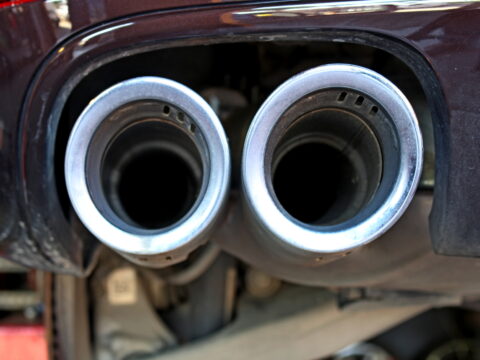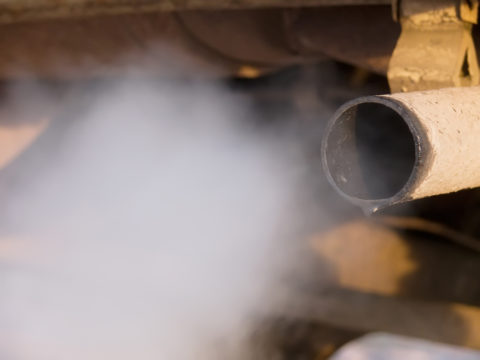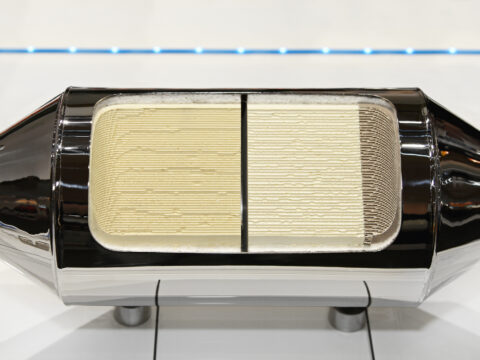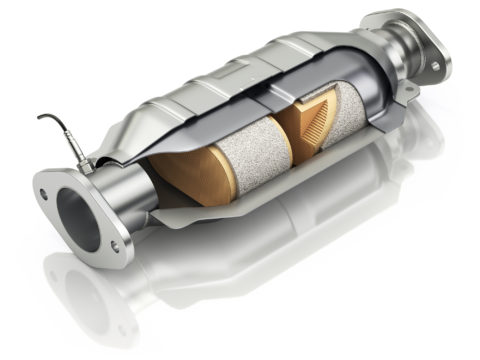The purpose of a car’s exhaust system is to route gases away from the vehicle, and a muffler dampens the noise that a straight exhaust system produces.
Below is more information on vehicle mufflers and the normal temperature ranges in exhaust gas dispersal systems.
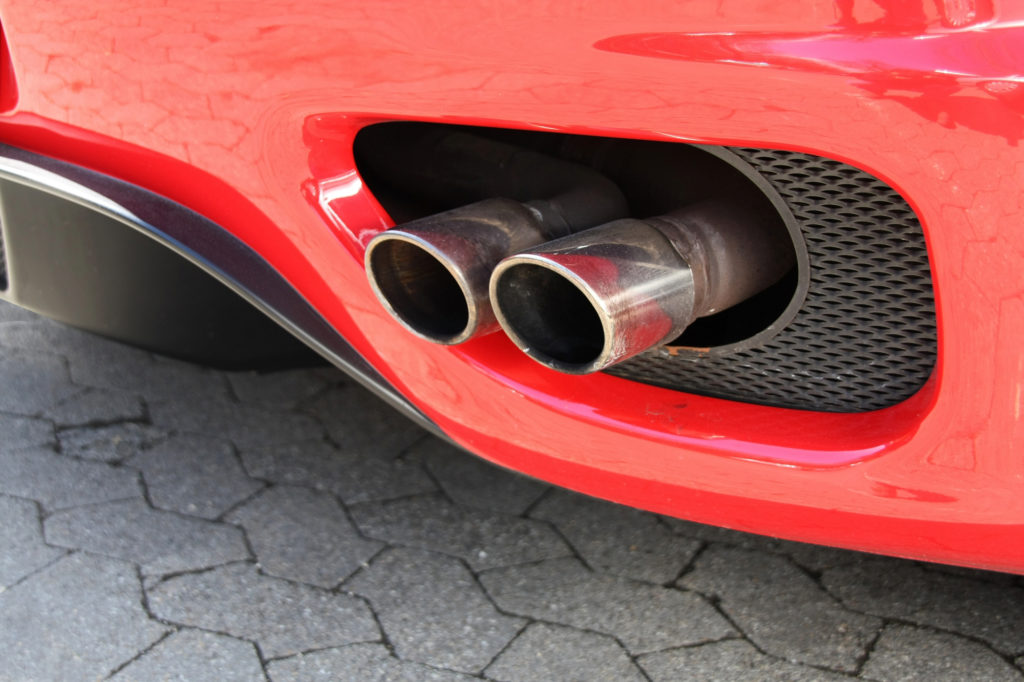
Contents
Hot Exhaust Meaning
While it does depend on the exhaust system, the average temperature at the muffler is usually between 300 and 500 degrees Fahrenheit.
Your vehicle engine produces extremely hot gases in the process of using combustion to power the vehicle forward or backward.
Those gases transfer to the back of the vehicle and out of it.
Without this transfer, the following could happen:
- The engine could stall.
- Deadly exhaust fumes could rise upwards and permeate the vehicle cabin.
- The overall temperature of the vehicle, particularly in and around the engine, could get so hot that it could hinder the vehicle’s performance, or a fire could start.
The transferred gases are called “exhaust.” Exhaust is an umbrella term that covers several different gases.
The following are a few of the gases that are part of any Gasoline exhaust system:
- Benzene
- Formaldehyde
- Carbon Monoxide
- Ethylbenzene
- 1, 3-Butadiene
This exhaust is the product of the engine’s extremely hot gas dispersal system. When that exhaust exceeds a normal temperature range, it’s called “hot exhaust.”
When that happens in some vehicles, a warning light will come on.
Why Do Mufflers Get Hot?
Your engine uses combustion to power itself. That combustion is a constant series of ignitions and explosions that turn engine components.
Each combustion produces incredible heat that transfers into gases simultaneously.
When gases exit the engine, they are the hottest they will be and reach over 1,000 degrees Fahrenheit.
Those gases cool somewhat as they move through the exhaust system.
The muffler is the last point they reach before being pushed into the air.
The muffler has several components made of different materials, but the predominant material is metal. Just like a fireplace poker absorbs heat when thrust into a fire or hot coals, the metal in a muffler absorbs heat.
That raises the overall temperature of the muffler as well as the rest of the exhaust system.
The exposure of the muffler to extremely hot gases is prolonged and constant, even if the vehicle is idling.
Since metal will not catch fire and has a higher melting point, the temperature of the muffler has time to build and eventually reaches several hundred degrees Fahrenheit.
How Hot Does a Car Muffler Get?
The heat of a muffler depends on two things:
- The revolutions per minute (RPMs) of your engine.
- How fast you are moving the vehicle via combustion in the engine.
A muffler in an extreme situation can exceed 700 or 800 degrees Fahrenheit, which is still 200 degrees Fahrenheit lower than the average exhaust temperature when it leaves the engine.
On average, however, a muffler will range between 300 and 500 degrees Fahrenheit.
The difference between when the exhaust leaves the engine and when it reaches the muffler depends on the catalytic converter.
The catalytic converter can reach more than 1800 degrees Fahrenheit, but most top off at around 1000 degrees.

How Hot Does a Muffler Get On A Small Engine?
Since there is no catalytic converter on some smaller engines, the temperature of the muffler will be about the same.
A lawn mower engine, for example, will be about 300 degrees Fahrenheit to about 400 degrees.
Because the exhaust system is shorter and there is no catalytic converter, the hot exhaust from the engine pours directly into the muffler.
How Hot Does a Diesel Exhaust Muffler Get?
Diesel molecules need more heat to ignite. That means diesel will burn hotter from the beginning. As that heat transfers to emission gases, it leaves the engine hotter.
The typical exhaust temperature of diesel ranges from 1000 to 1200 degrees Fahrenheit. That means the muffler will get hotter as the exhaust moves out of the vehicle.
Typical Exhaust Gas Temperature
Exhaust temperature is determined by how much heat is needed to make different molecules ignite. Gasoline molecules, for example, are not as heavy as diesel, which means they burn at a lower temperature range.
Diesel molecules, because they are heavier, ignite at a higher temperature.
Gasoline typically ignites at a temperature range of 700 to 1100 degrees Fahrenheit. Diesel ignites at a range between 1000 and 1200.
As a result, diesel exhaust is hotter than gasoline when it leaves the engine. That holds through the muffler, but the range for both is typically between 300 and 900 degrees Fahrenheit.
Factors Affecting Temperature of Exhaust Gas
Affecting the typical temperature is a combination of factors. The first factor is the RPMs of the engine. The higher those are, the hotter the exhaust.
The second factor is the length of time the vehicle is in operation. A vehicle running for a short time will not be as hot as a vehicle that has been in operation for miles.
The third factor is the state of the engine. Engines that run inefficiently or bun a lot of gas through the exhaust system will usually be hotter.
Clogged engines can increase the temperature of all the components because they must work harder to get to the desired speed.
The quality of gasoline also affects the temperature of the exhaust as well as exhaust components. Poor quality gasoline makes the engine work harder, which produces higher temperatures.
Because of all those variables, there is no “typical” temperature so much as a temperature range that is normal versus abnormal.
What Is the Hottest Part of the Exhaust System?
The hottest part of the exhaust system is at the point that the exhaust transfers out of the engine. Temperatures at that point can exceed 1000 degrees.
As soon as gases leave the engine, they start to cool. Although, occasionally, the cooling is minimal, resulting in a very hot catalytic converter.

